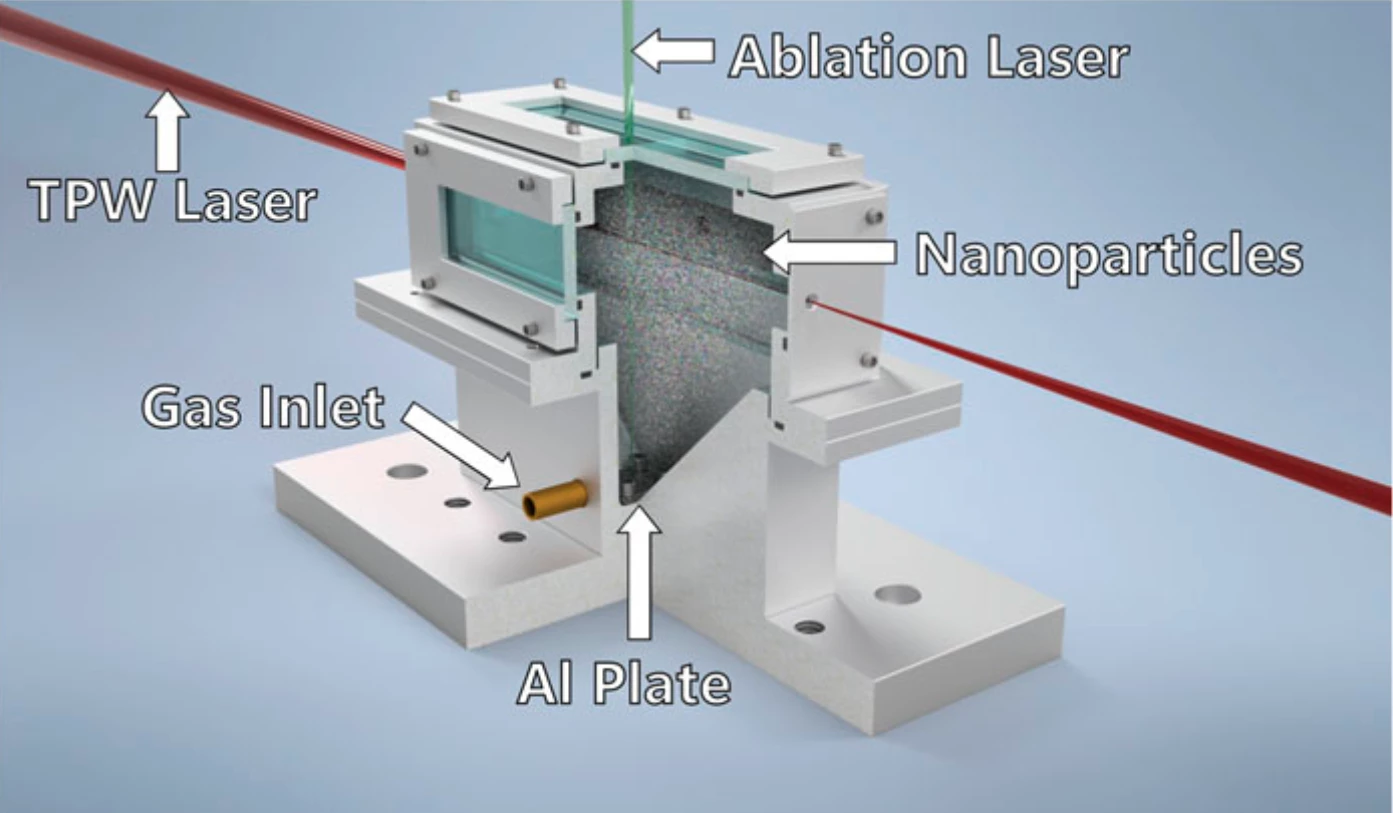The USA has only two accelerators that can produce 10 billion electron-volt particle beams, and they're each about 1.9 miles (3 km) long. "We can now reach those energies in 10 cm (4 inches)," said the CEO of TAU Systems, which has built an ultra-compact accelerator.
Well, that's the length of the helium-filled gas chamber where the actual acceleration occurs in the device TAU has recently tested. This compact advanced wakefield accelerator also requires a monster of a laser to run – in this case, the Texas Petawatt Laser, which sits on a 34-ft (10-m)-long table in the Center for High Energy Density Science at the University of Texas in Austin.
One of the world's most powerful lasers, this beast fires out ultra-intense bursts of laser light at energy levels about 1,000 times the entire installed capacity of the entire USA – but only once an hour, and only for 150 femtoseconds, or somewhat less than one billionth of the time it takes for lightning to discharge.
All up, TAU's device is less than 66 ft (20 m) long, and it fires out beams at a remarkable 10 GeV. It does so using a modified version of the wakefield acceleration technique first described in 1979, and currently being applied in many accelerator projects.
A regular particle accelerator is effectively a series of rings, which when a positive voltage is applied to them, can attract electrons. The rings are powered up sequentially, pulling electrons through the tunnel faster and faster and each switching off before the electron reaches it.

A laser-driven wakefield accelerator, though, more or less turns a light pulse itself into a light-speed electromagnet, causing particles to chase behind it and gather extraordinary speed and energy in a very short distance.
TAU's device uses a small chamber filled with helium gas. When the Petawatt Laser fires a light pulse through this gas, the enormous energy of the pulse ionizes the gas into plasma. And as it races through this plasma, the pulse leaves a wake behind it, something like a boat leaves as it travels through water – except in this case, it creates a trail of extremely powerful electrical charge fluctuations.
If you inject an electron at just the right time, these massive moving charges pull and push it along behind the light pulse, draining the energy (but not the speed) of the original laser pulse and transferring it to the accelerated electron, propelling it to a "good fraction of the speed of light" within a short distance, according to The Thought Emporium.
TAU's key advance in this device is an auxiliary ablation laser which fires precisely-timed bursts onto a metal plate inside the gas cell, injecting a stream of metal nanoparticles into the chamber that can boost the energy delivered to the electrons as they follow the laser bursts.

“It’s hard to get into a big wave without getting overpowered, so wake surfers get dragged in by Jet Skis,” said Bjorn “Manuel” Hegelich, associate professor of physics at UT and CEO of TAU Systems. “In our accelerator, the equivalent of Jet Skis are nanoparticles that release electrons at just the right point and just the right time, so they are all sitting there in the wave. We get a lot more electrons into the wave when and where we want them to be, rather than statistically distributed over the whole interaction, and that’s our secret sauce.”
Hegelich and his team are developing their own tabletop-sized laser system, which they say will make the overall system even more compact, and will fire thousands of times per second instead of once per hour.
So what will an ultra-compact, high-energy particle accelerator be good for? Perhaps to drive an X-ray free electron laser, which could potentially take slow-motion videos at the atomic or molecular scale. It could also be useful in testing how well electronic components destined for space flight can stand up to radiation, to image the internal structures of semiconductor chip designs in 3D, and potentially to develop new cancer treatments and advanced medical imaging technology.
The team's research paper is available in the journal Matter and Radiation at Extremes.
Source: University of Texas at Austin





